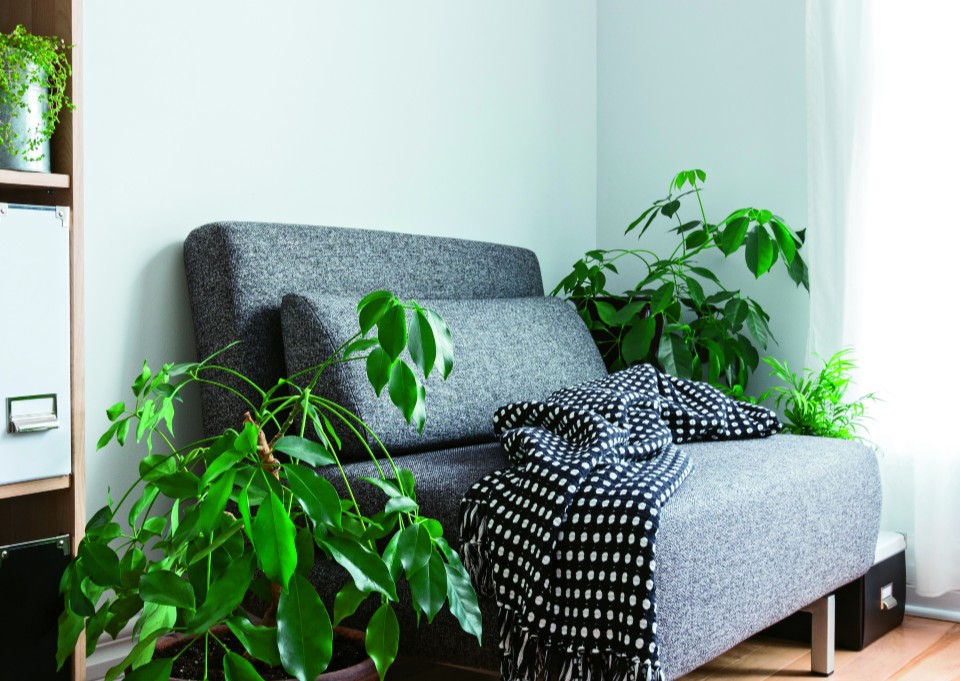
Houseplants are (Still!) Hot
To call houseplants a trend at this point is almost an understatement. It is a movement, fueled by microtrends within it. Pilea, monstera and peperomia are all having their moment.
It isn’t all about the plants, either. The houseplant movement is changing the way people look at pottery, glassware and even print patterns. Walk the aisles in your local HomeGoods store and you’ll see tropical foliage themed EVERYTHING. Now the question is: how do garden centers take full advantage of all of this?
Last fall at GrowIt! we wanted to get a better understanding of the underlying 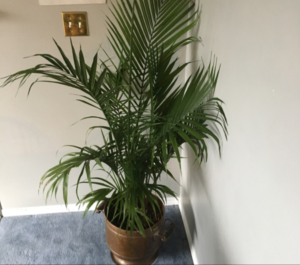 trends within the houseplant movement. In 2019, houseplants accounted for just under 40% of the plant photos uploaded onto the GrowIt! app. Seeing this, we knew we had a healthy audience of houseplant enthusiasts and buyers, and wanted to find out what they thought about certain things.
trends within the houseplant movement. In 2019, houseplants accounted for just under 40% of the plant photos uploaded onto the GrowIt! app. Seeing this, we knew we had a healthy audience of houseplant enthusiasts and buyers, and wanted to find out what they thought about certain things.
We decided to use National Indoor Plant Week as a reason to give away some houseplants, and ask consumers questions about their houseplant habits in the process. We asked a question a day for eight days, and received over 10,000 responses in total.
We teamed up with TPIE (Tropical Plant Exhibition Exhibition) to create a report from the questions and our existing GrowIt! data to help the industry better understand the mind of the consumer when it comes to houseplants. The report can be found in its entirety at www.growitmobile. com/houseplantreport.
The idea was that you could arm yourself with information from the report, and attend TPIE to see some of these plants in action. From the report, we were able to isolate specific trends that we see having a big impact in 2020 and beyond.
Big Plants
One of the most intriguing bits of insight to stand out in the report was the interest in big houseplants. On the outside, this trend isn’t entirely surprising, due to the popularity of specific plants.
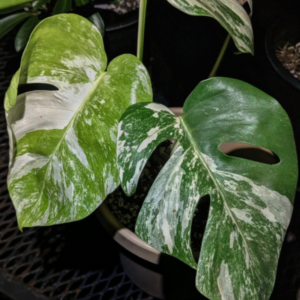 When we polled community members about the plant that is at the top of their wish lists, Monstera deliciosa topped the list for all but a handful of areas, and even then the top plant was Ficus lyrata (fiddle-leaf fig). Both of these plants are extremely popular and, for a time, suffered from a shortage in supply. Though it’s not hard for consumers to get their hands on them now, the interest is still there.
When we polled community members about the plant that is at the top of their wish lists, Monstera deliciosa topped the list for all but a handful of areas, and even then the top plant was Ficus lyrata (fiddle-leaf fig). Both of these plants are extremely popular and, for a time, suffered from a shortage in supply. Though it’s not hard for consumers to get their hands on them now, the interest is still there.
We even saw significant interest in large indoor palms. People want something that’s going to occupy space and add a dramatic look to their interiors and balconies. However, when looking deeper into the data and other questions, it’s clear that consumers want more options when it comes to large plants. Outside of monsteras, palms and fiddle-leaf figs, there are just a handful of different large foliage plants that are routinely available to consumers.
An interest in large plants also reappeared later on in our research, when we asked community members which non-houseplants they wish they could grow indoors. All of the top 20 responses fit into two categories — and some fit into both: Trees/ Shrubs and Edibles.
The top five plants that millennials wished they could grow in their homes were ALL tropical fruit trees. Outside of the fruit interest, roses, lilacs and willows made the top list. These are all large plants that people
actively wish they could grow indoors. While some of this may be hyperbole, it does offer a suggestion that consumers want bigger plants indoors.
How can garden centers cater to this? Get your hands on and supply unique larger items. While monsteras are hot (and you do need them in stock), it might be wise to carry other things that consumers can’t find elsewhere, but that occupy that same amount of space. Even finding ways to enable your customers to grow tropical trees year-round in their homes could become profitable.
Variegation
While variegated monsteras may not fit into your production plans, that doesn’t mean consumers will stop asking for them. It’s not just monsteras, either. Variegation is hot in all kinds of houseplants.
 When looking at Pothos, the two top varieties on GrowIt! for most of the country are ‘Hawaiian’ and ‘Marble Queen’. Both varieties offer distinct variegated foliage of green and yellow or green and white. The key here isn’t simply that consumers are more interested in variegated varieties, but that they value them more as well. It’s a 2-for-1 color, and due to lack of supply of certain plants that fit this description, they’re perceived as rare. This interest bleeds over from plant to plant, and consumers are willing to go to greater lengths and spend more money for plants that have more color in their foliage. We’ve even seen growth in hypoestes as a houseplant, due in large part to its multicolored foliage.
When looking at Pothos, the two top varieties on GrowIt! for most of the country are ‘Hawaiian’ and ‘Marble Queen’. Both varieties offer distinct variegated foliage of green and yellow or green and white. The key here isn’t simply that consumers are more interested in variegated varieties, but that they value them more as well. It’s a 2-for-1 color, and due to lack of supply of certain plants that fit this description, they’re perceived as rare. This interest bleeds over from plant to plant, and consumers are willing to go to greater lengths and spend more money for plants that have more color in their foliage. We’ve even seen growth in hypoestes as a houseplant, due in large part to its multicolored foliage.
Green is the No. 1 color noted for houseplants, which comes as no surprise. But it’s also clear that consumers are interested in an array of shades, and the more green tones they can get on an individual plant, the better.
Notably, this interest in subtle color variation shows up in the lack of flowering houseplants that we see. While orchids have increased in popularity in the last year, they are not at the level of other foliage houseplants.
Stocking plants that offer consumers more selection in the range of green that they can place in their homes is key. From the dark forest colors to the bright lime green colors, it’s important to have it all, and having options and unique color patterns on a plant creates a one-of-a-kind feeling for that end consumer.
Where They Shop
Gone are the days when consumers would simply buy what we put in front of them. If we continue to provide an unchanging offering, they will find other ways to satisfy their needs. When we looked at where consumers were shopping for plants, a couple things stuck out. Though percentages were small, more than a handful of consumers stated that the best option for them to buy plants was online. They feel that the selection is larger, and that the prices aren’t much different than what they’d see in stores.
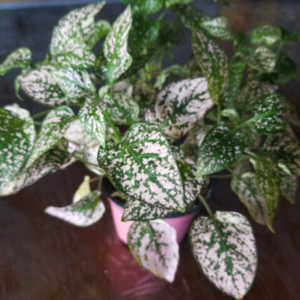 While the “local nursery/garden center” category drew the most responses, box stores as a whole owned the greatest percentage of the houseplant buying space, and many consumers voiced that the two were similar options for buying houseplants.
While the “local nursery/garden center” category drew the most responses, box stores as a whole owned the greatest percentage of the houseplant buying space, and many consumers voiced that the two were similar options for buying houseplants.
How can the independent market change this perception? The ability to carry a larger assortment of houseplants is much easier to do at an independent level, and we have to find a way to showcase that. This will be a crucial element to establishing large shares in this market, and ensuring that box stores and online retailers do not gain total control. Your houseplants can’t be a commodity in a collector’s market.
Another interesting find was that a lot of consumers feel the best way to get their hands on elusive plants is in the form of plant swaps initiated in online groups and message boards. They’re becoming savvy propagators and are willing to take a risk on buying cuttings and rooting things themselves. Even if we cannot prove to them that they have better chances in buying rooted plants, is there an angle to provide them the education they need to be successful when buying cuttings or bare roots from strangers online?
Whatever the angle, houseplants aren’t something that we can expect to see decrease in popularity in the next few years, and we should look at this as an opportunity to engage the next generation of plant buyers. This step in their education and adoption is crucial so that we secure customers for years to come.


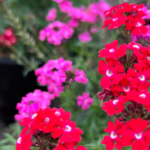
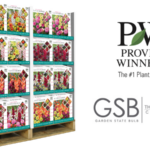


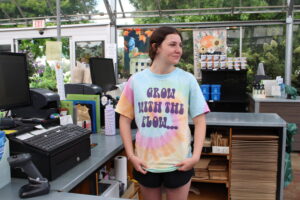
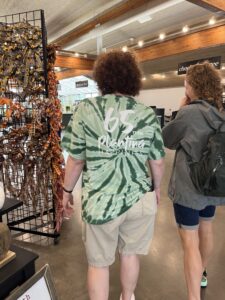

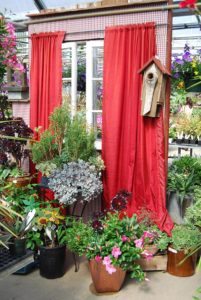
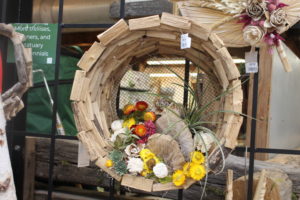
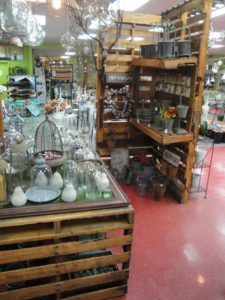

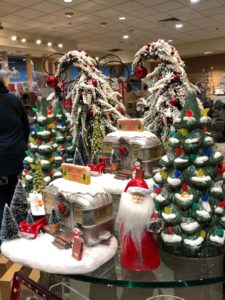

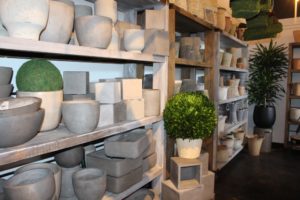
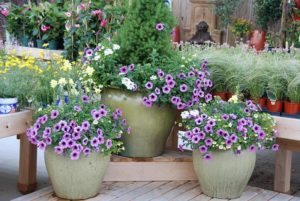
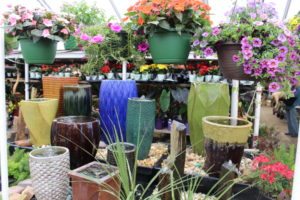
 Videos
Videos





